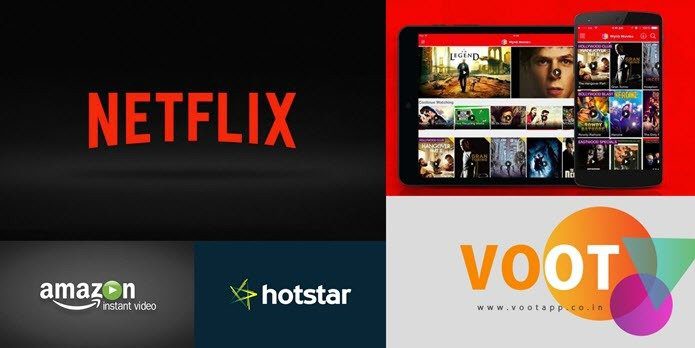Google has officially retired Play Music service which makes sense seeing there is no need for two separate music streaming apps. For now, you have three behemoths providing you a vast and ever-growing library of music. Spotify has over 70 million songs with 155 million paying subscribers. Apple Music is not too far behind with 60 million subscribers and over 70 million songs but the data is old from 2019. A report from last year puts YouTube Music at 20 million subscribers. Google Play Music had about 7 million subscribers in 2018. It’s soon for them to show their numbers, especially when the competition has a head start. It’s apparent that you are confused as to which music streaming service you should use. So I shall highlight the salient features of all three music services for you. After that, you can weigh your options and choose the best one. Let’s get started.
1. UI and Accessibility
Apple Music has a neat UI with 5 tabs at the bottom. First one is Library where you can access songs by playlists, artists, albums, or downloaded music. Scroll a little to find the Recently Added collection. Listen Now (earlier For You) tab is where Apple’s excellent human editorial team will recommend music and playlists. The search icon has been moved to the bottom for easier access. Spotify by default has a dark mode. The Home tab houses recently played songs, podcasts, and recommendations both. Next to it are the Search tab and Your Library tabs which are self-explanatory. YouTube Music’s Home tab houses your favorites, recommendations, and live performances (yay). The Explore tab is where you find new or trending music, genres, and the service populates it for you. The Library is where you will find your playlists and saved songs. YouTube Music also sports a dark mode, and I feel it’s pure black compared to Spotify’s dark mode. I like Apple Music’s UI as the Home tab is easily accessible. Also, it provides a separate tab for discovering new music but so does YouTube Music.
2. Recommendations
Each service offers a different recommendation since they use different algorithms. If you like a song by one artist (say Eminem), you may also like other songs by him and his band members and all other artists who have collaborated with him on different projects (Dr. Dre, Rihanna). That makes sense but is not always true. Then there are music recommendations based on search terms, listening habits, moods, and categories. Here are our readers’ consensus and my personal experience. Apple Music has an excellent editorial team that curates and creates some of the best playlists. Also, Apple Music’s recommendation engine is really good at guessing what I would like to listen to. Humans beat AI, take that you machine! Spotify follows Apple’s suit. While it carries plenty of good music to recommend, it falls just a tad bit short of Apple Music. Still, I enjoyed music recommendations and curated playlists. YouTube is a Google product. Hence, I bet that YouTube Music is built upon search data obtained from YouTube. As such, Google already knows what you like thanks to all the music-related queries you have been searching in both Google Search and YouTube. Even though I just started using it, YouTube remembered that I once, long ago, searched for the Believer music video. But it is too early to pass judgment. So I suppose there’s a tie between Apple Music and YouTube Music with Spotify following very closely. Don’t know the song’s name but remember the lyrics? Feed-in the lyrics and YouTube Music will find that song. Nifty. In the end, I would like to wrap with a thought. Music tastes are as diverse as our thoughts and way of living. Though algorithms are getting better, search and customized playlists are still the best ways to enjoy and discover new music. Comparing recommendations is not fair in my opinion, but that’s just me.
3. Video Collection and Podcasts
First things first. Always remember that the music collection is going to change a little across the countries depending on where you live. For the most part, it remains the same, and you can find more songs irrespective of your geographical location. That has everything to do with digital licenses and distribution and nothing to do with the company being unfair to your location. I am going to side with YouTube Music here because YouTube is the biggest hosting site in the world, for both audio and video. Search for ‘Elvis Presley TV’ on YouTube Music, and you will find his TV appearances and performances that are nowhere to be found on other platforms. That kind of content is gold for die-hard fans of any band or singer. The collection seems to be unbeatable though both Apple Music and Spotify also offers music videos; a few searches showed that they are lagging, understandably. You can find pretty much any song on YouTube Music that you may or may find elsewhere. That has always been true for the video platform from where YouTube Music sources its content. That doesn’t mean Spotify and Apple Music are sub-par. Both are amazing, but if we are strictly talking numbers, I think YouTube wins this round. I searched Eminem videos on Spotify, and it came back with nothing which was surprising. Apple Music sent me to a playlist with many Eminem videos but still not a complete list like the one presented by YouTube Music. I can also see YouTube views for music videos on YouTube Music which is cool, I guess. Note that Apple is working on original shows. Spotify has podcasts. Also, Apple may decide to launch a separate app for videos to compete with, err, Netflix instead of making it part of Apple Music. In Spotify, tap on Your Library and then select Podcasts to find many categories to browse. One Google employee said they have no plans to support podcasts in YouTube Music in the near future — that’s such a shame. The keyword here is ‘near future.’ iTunes also supports podcasts but not inside Apple Music. Why not consolidate, Apple?
4. Pricing and Platform
Both Apple Music and Spotify offer identical plans that will cost you $9.99/month ($99/year in case of Apple Music) for the individual plan, $4.99 if you are a student, and $14.99/month for the family plan. You can use the free, ad-supported version of Spotify by registering with the service. Or, you can try the app free for up to 1 month (3 months for Apple Music). YouTube is a new entrant and wants to create some waves. So it is offering a free trial for 3 months. After that, it will cost you $9.99/month, but if you add $2 more, you will get an ad-free YouTube Premium experience. Yes, this new package, priced at $11.99, is called YouTube Premium which is replacing YouTube Red. That means you also get access to YouTube Originals which are not so great at the moment. However, an ad-free YouTube streaming gotta count for something, right? YouTube Music has no family or student plans yet which seems to be very popular with the users. Also, you can’t play music in the background in the free version of YouTube music which is not cool at all. All three of them have a mobile app for Android and iOS. However, only Spotify and YouTube Music have web versions. Apple Music integrates with iTunes for Windows and Mac while YouTube Music has no dedicated desktop apps.
Music Knows No Language
If you are part of the Apple ecosystem, Apple Music makes a lot of sense because of its family plan and how Apple apps work seamlessly across other Apple products. Similarly, YouTube Music makes sense for users of the Google ecosystem. Plus, it has a humongous audio and video music collection. Then there is YouTube Premium which adds some value. Spotify is an all-rounder with a good UI, better availability, and a decent collection of music. Don’t forget the support for podcasts that you won’t find in the other two services. Next up: Spotify has a massive collection of music. Sometimes, you may forget or never discover some hidden gems. Learn how to discover forgotten music with Forgotify. The above article may contain affiliate links which help support Guiding Tech. However, it does not affect our editorial integrity. The content remains unbiased and authentic.




























